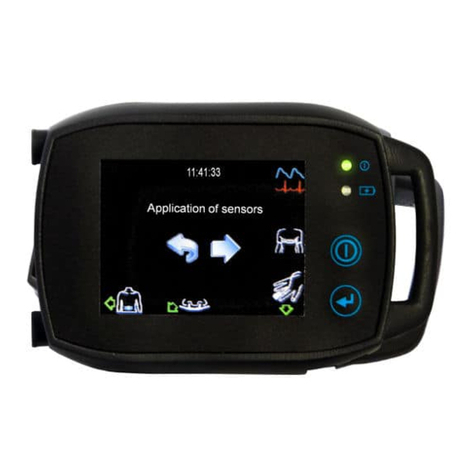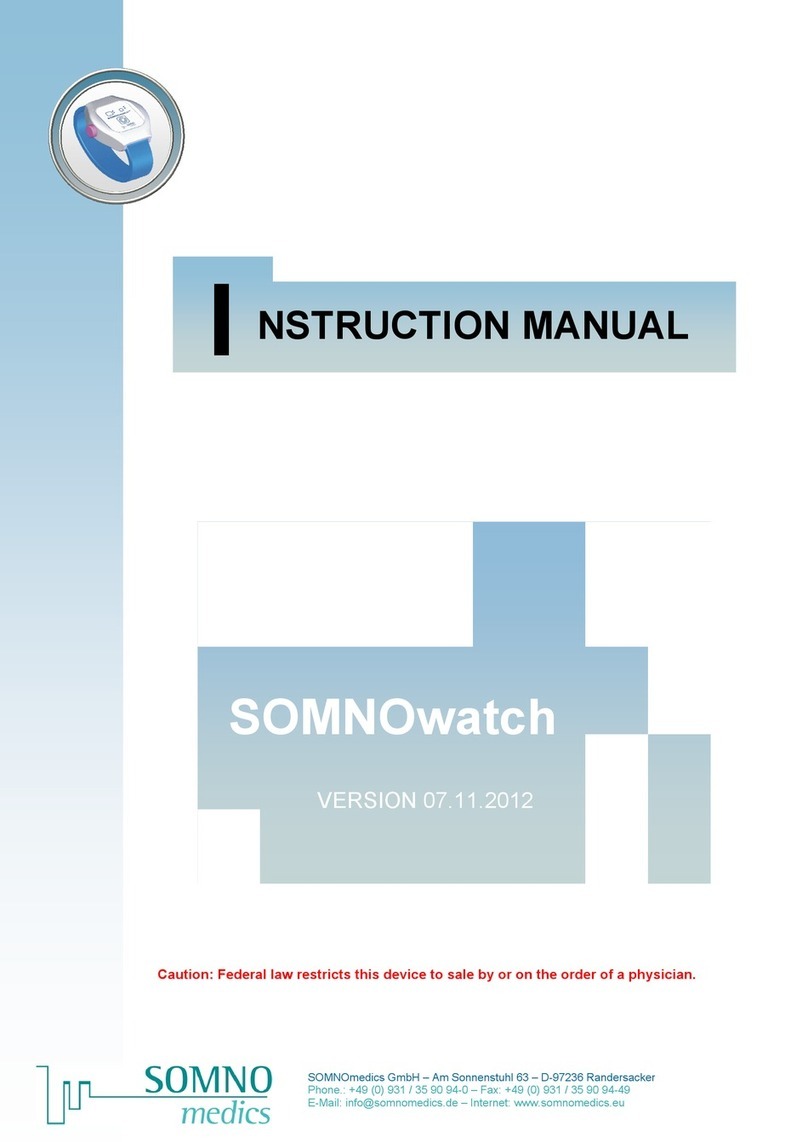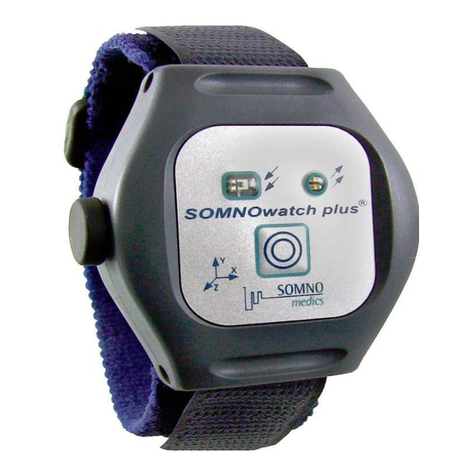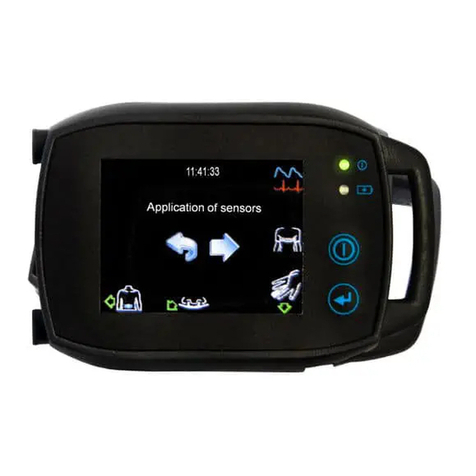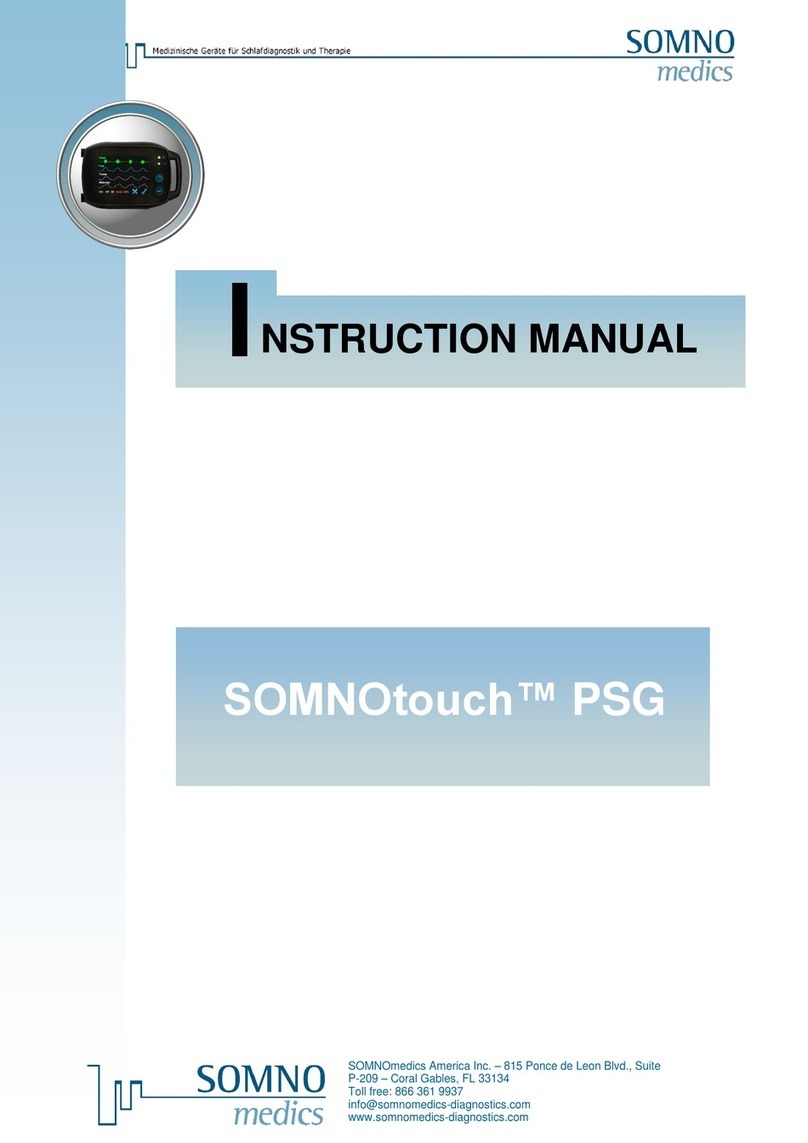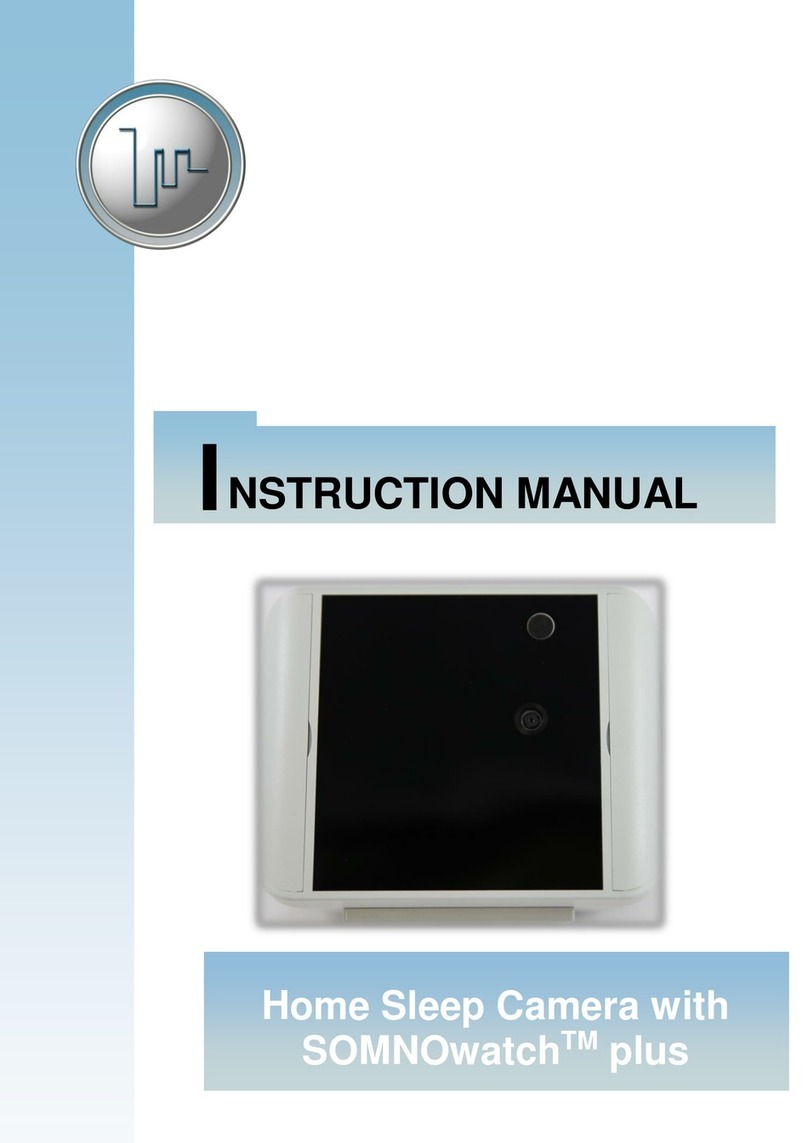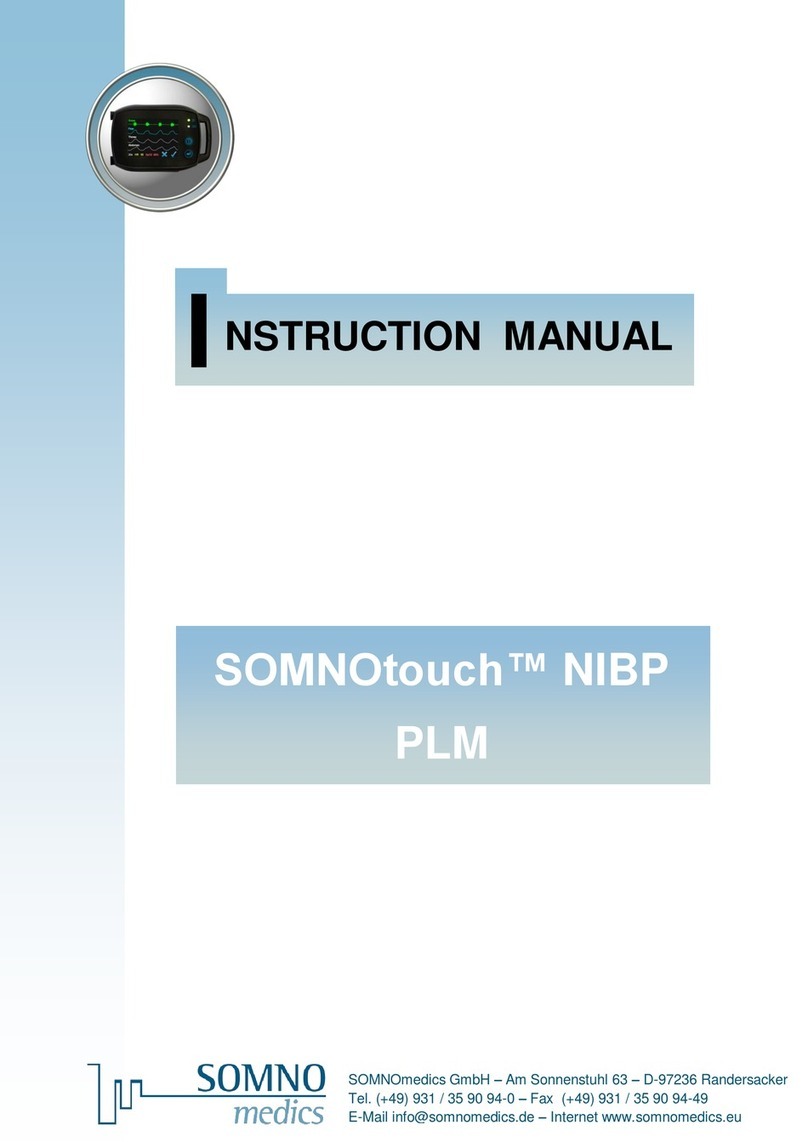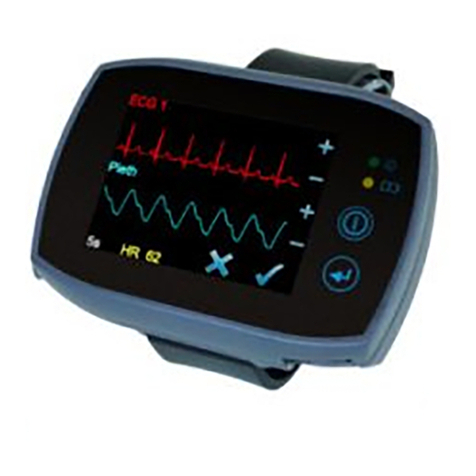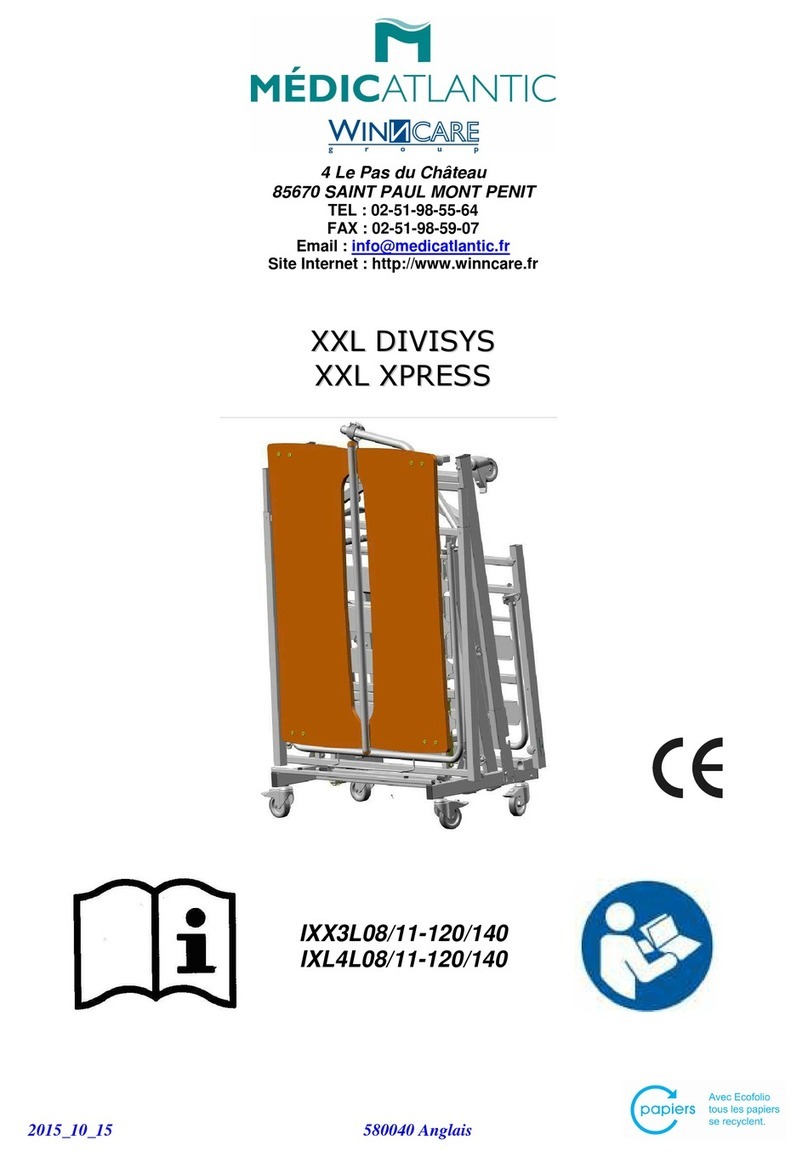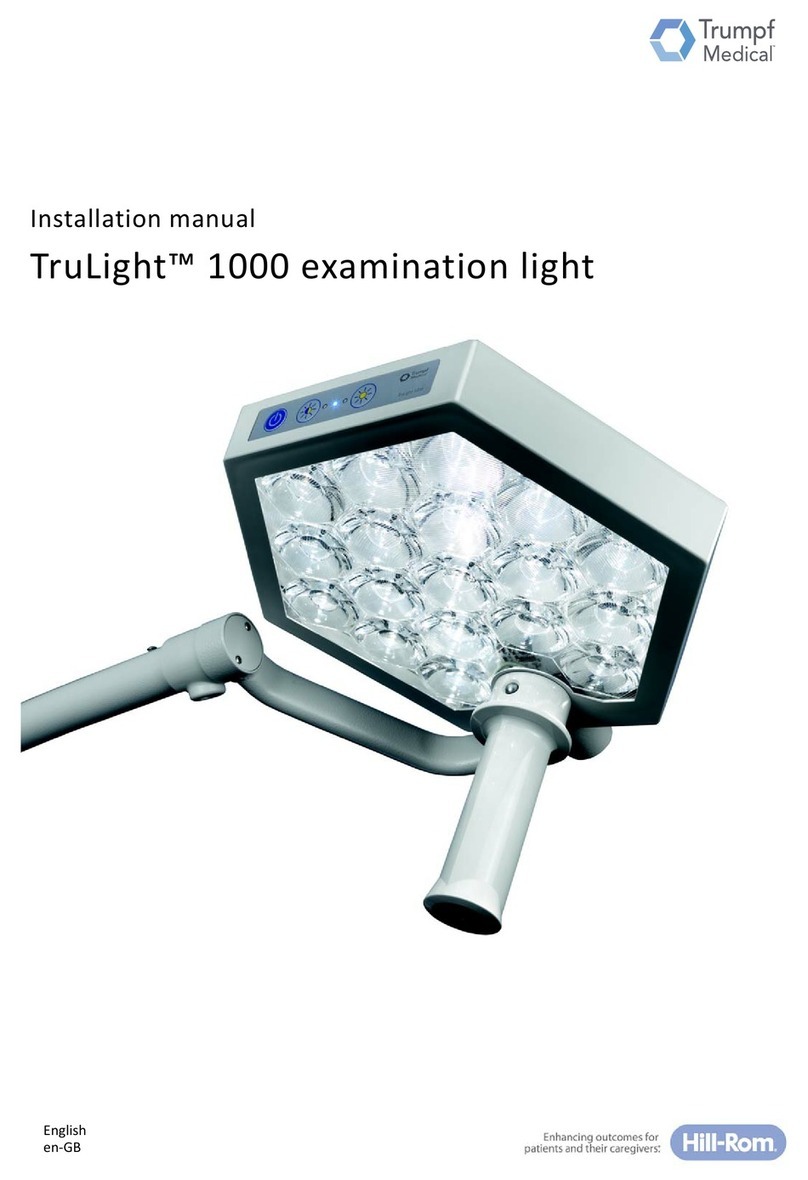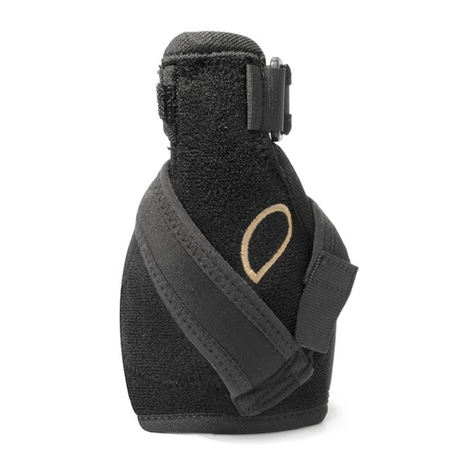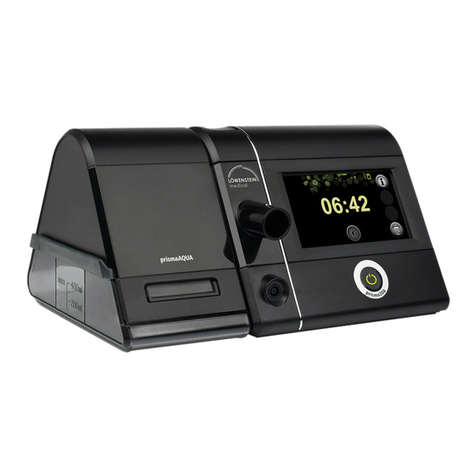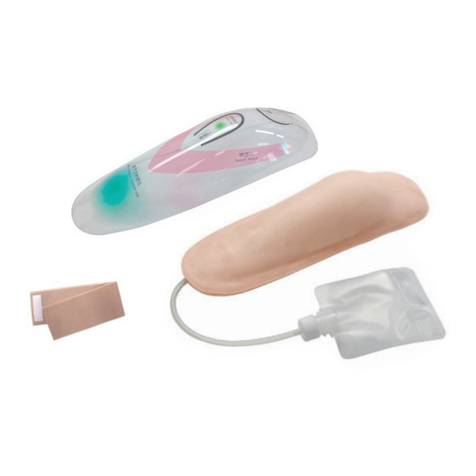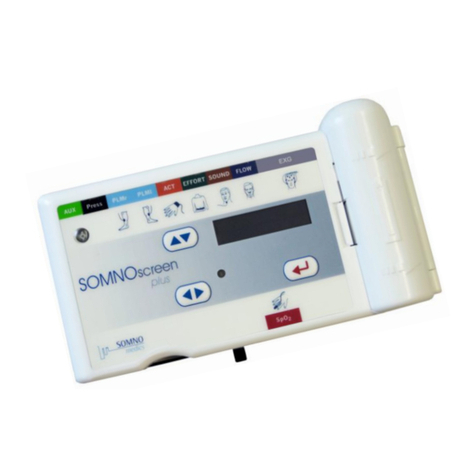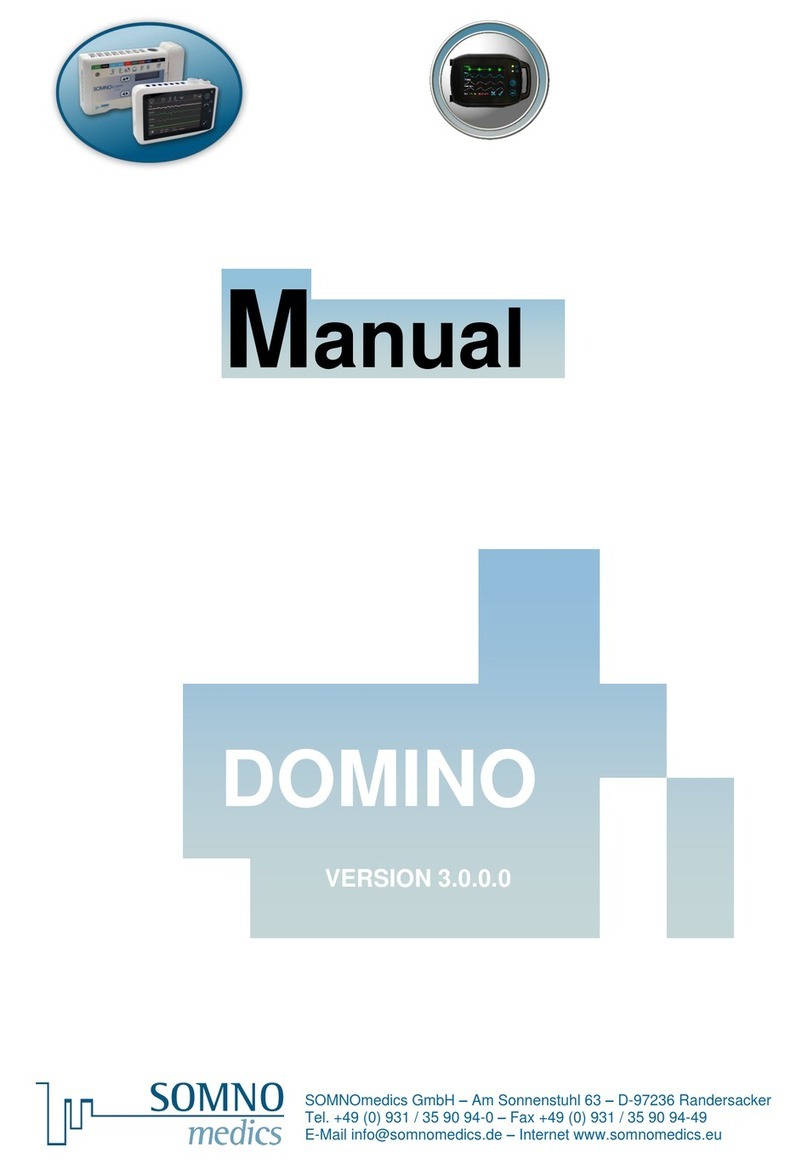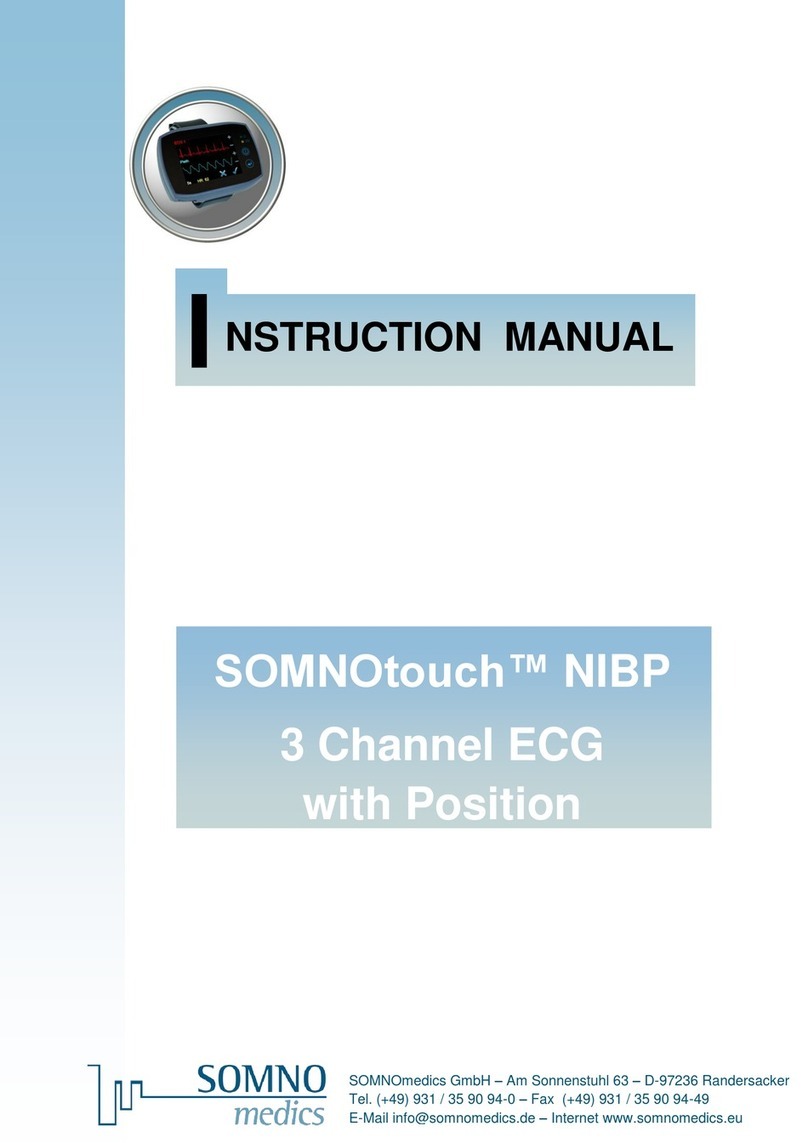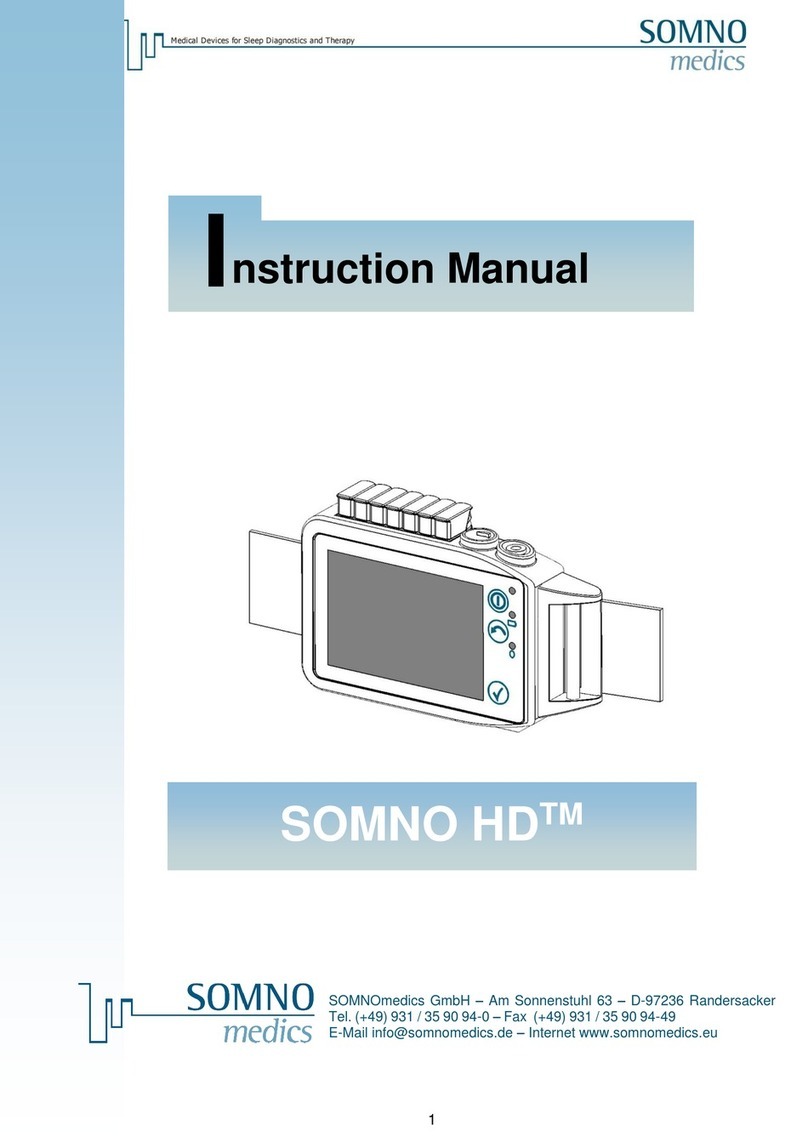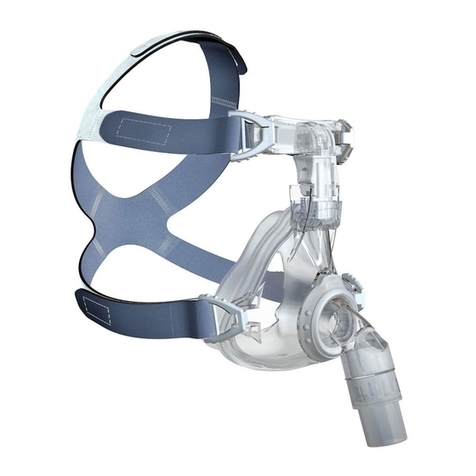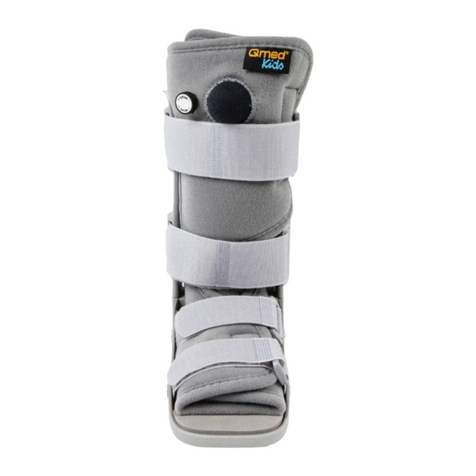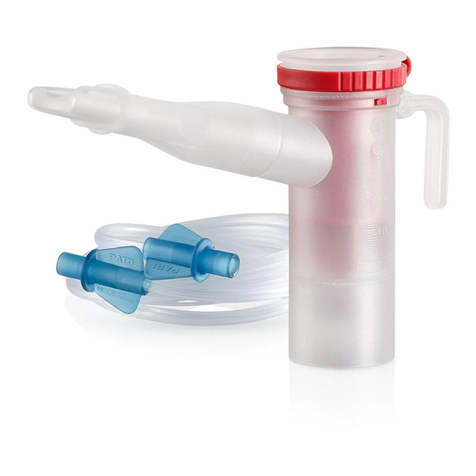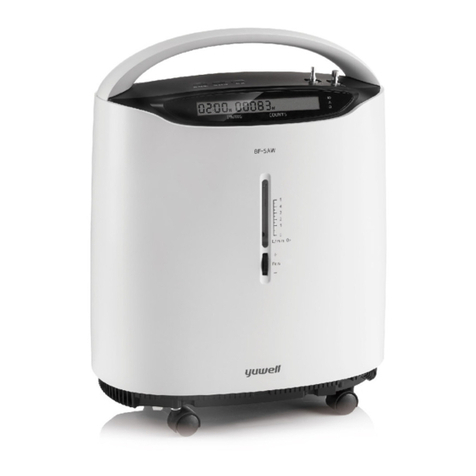
11
There was no testing conducted to demonstrate the moisture retention filter for nasal cannula
used is effective in preventing cross-contamination.
Opening the case, repairing or modifying the SOMNOscreen™ HD in any way will void
the guarantee and might affect the safety of the device. Only SOMNOmedics and its
authorised distributors may repair the unit.
The body strap is made of material commonly used in clothing and non-medical watchbands,
however if redness or swelling of the skin occurs where the band is in contact, please
discontinue use immediately and consult your physician.
Pulse Oximeter and sensor related Warnings and Cautions:
The SOMNOscreen™ HD has no audible alarms for monitoring Pulse and SpO2.
The SOMNOscreen™HD must be able to measure the pulse properly to obtain accurate SpO2
measurement. Verify that nothing is hindering the pulse measurement before relying on the
SpO2measurement.
Fingernail polish may reduce light transmission and thereby affect SpO2accuracy.
Inspect the sensor application site at least every 6 to 8 hours to ensure correct sensor
alignment and skin integrity. Patient sensitivity to sensors may vary due to medical status or
skin condition. Avoid excessive damage to the skin beneath the sensor.
Do not use damaged SpO2 sensors. If the sensor is damaged in any way, discontinue use
immediately and replace the sensor.
Misuse of the pulse oximeter sensor with an increased pressure over a prolonged period can
lead to a barotrauma.
Follow local governing ordinances and recycling instructions regarding disposal or recycling of
the sensor and any components.
A functional tester cannot be used to assess the accuracy of a pulse oximeter monitor or probe.
Factors that may degrade pulse oximeter performance include:
Excessive motion and low perfusion may affect the accuracy of the SpO2 measurement.
Cardiogreen and other intravascular dyes, depending on the concentration, may affect the
accuracy of the SpO2measurement.
Excessive ambient light, artificial nails, excessive motion, Incorrect sensor type, poor
pulse quality, electrosurgical interference, Venous pulsations, cardiovascular dyes, sensor not
at heart level, Dysfunctional haemoglobin, fingernailpolish, moisture in the sensor, Improper
applied sensor, carboxyhemoglobin, methemoglobin, Residue (e.g. dried blood, dirt, grease,
oil) in the light path, Anemia or low haemoglobin concentrations , Aterial catheters, blood
pressure cuffs on same arm, infusion lines, etc.
The pulse oximetry device integrated in SOMNOscreen™ HD is calibrated to determine the
percentage of arterial oxygen saturation of functional haemoglobin. Significant levels of
dysfunctional haemoglobin such as carboxyhemoglobin or methemoglobin may affect the
accuracy of the measurement.




















